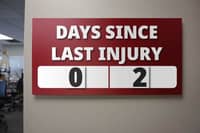Expert Commentary
Latest Articles
Design and Professional Liability
Real Estate Agents' Floor Plan Replication Ruled Fair Use
Employment Practices
Prevention Data Is Reshaping EPL Risk Management
Construction Safety
Focus on the Next Generation of Construction Professionals
Additional Insured Issues
The Additional Insured Labyrinth: Pleadings and the Duty to Defend
Leadership at All Levels





















